At the end of the 18th century, areas south of Buda's Gellért Hill were largely unpopulated, spotted with a few structures. Among these was the Bath of the Poor, Sáros Bath and a few military buildings, alongside a customs house on the intersection of the present-day bartók Béla and Lágymányosi Roads. A map from the 1810s shows a few roads: dirt tracks weaving through vineyards.
However, these centuries-old vineyards disappeared in 1875 due to the European Phylloxera epidemic, and the former vineyards stood empty.
A major shift occurred at the end of the 19th century. With the completion of the Franz Joseph Bridge, the city virtually flowed over to Buda. Tram services ran along what is today Bartók Béla Road, as did suburban rail lines to Budaörs and Budafok. In 30 years Szentimerváros was born in what had been empty land and houses were built along Bartók Béla Road, which housed famous figures and events.
Join us on a stroll down the road as we stoop in front of the most interesting buildings.
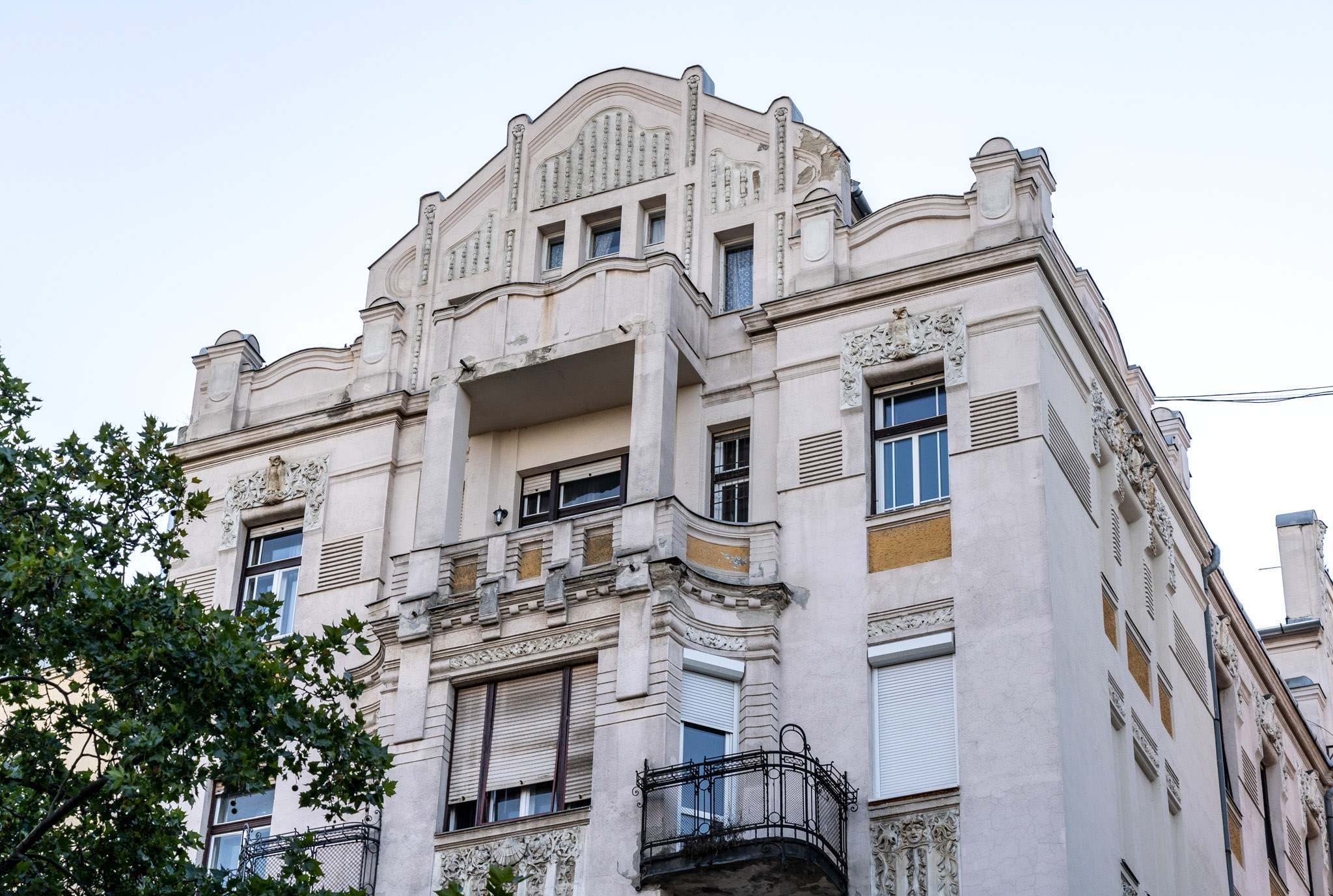
15 Bartók Béla Road, the former home of Géza Ottlik (Photo: Both Balázs / pestbuda.hu)
The Gellért Hotel dominates the beginning of the road, where the Sáros bath once stood. The hotel was once the largest and most luxurious in Budapest and houses an internationally renowned spa. Opposite to it stands the campus of the Technical University, while the campus is not officially on Bartók Béla Road the building is part of the landscape here.
In the masterpiece by Géza Ottlik, School at the Frontier and its unfinished continuation, Buda, the protagonist often returns to his home under 15 Fehérvári Road. Today this is 15 Bartók Béla Road. The unique block is actually made up of two building separated by an internal courtyard.
The neo-romanesque Gábor Baross Halls of Residence (17–19 Bartók Béla Road) is perhaps one of the most beautiful buildings along the road. It also houses a neo-romanesque Saint Emeric Chapel and a statue of its name giving saint in the spacious interior garden. A War memorial also stands in the garden paying respect to the students and teachers of the University that fell in World War I.
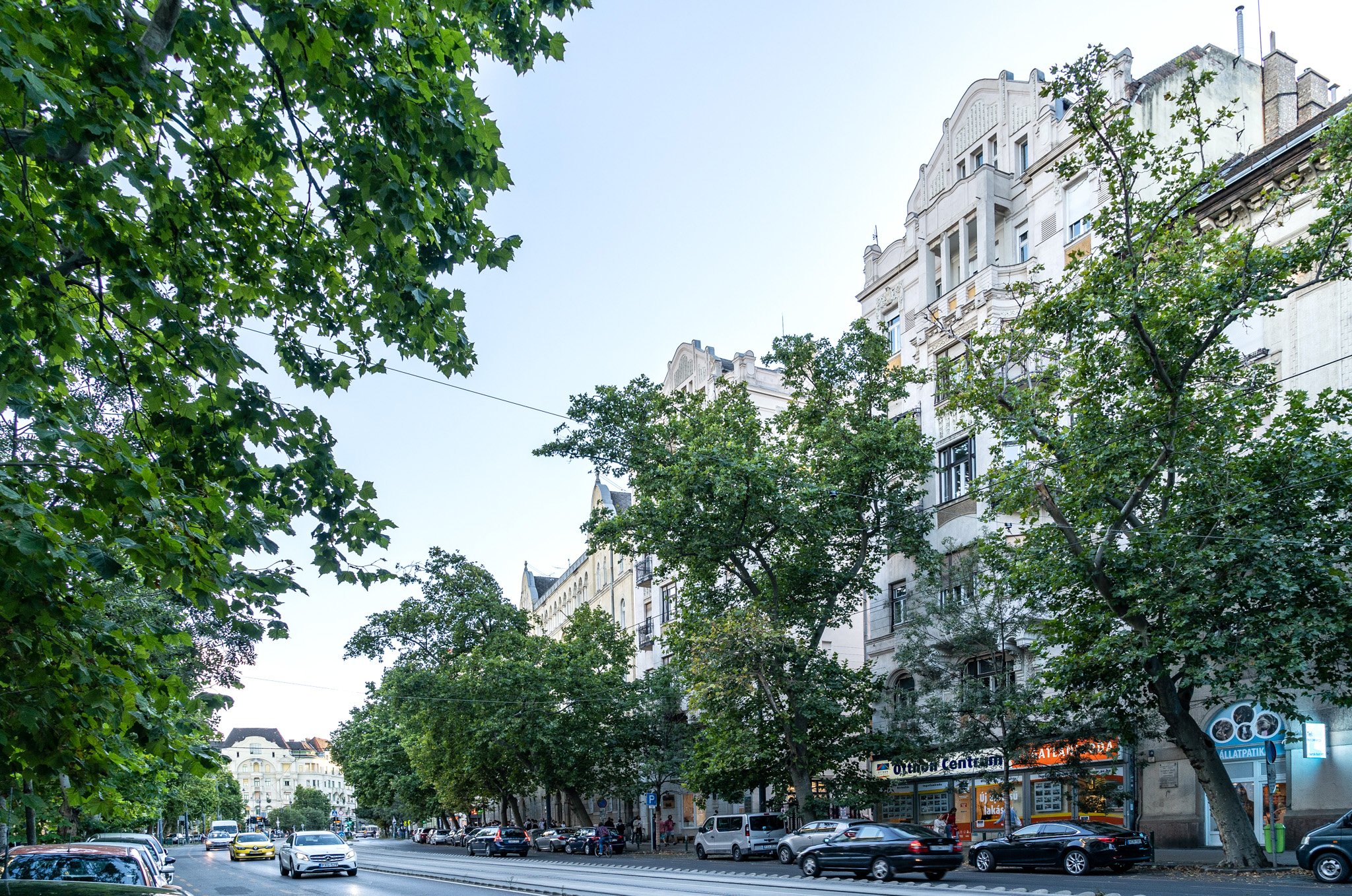
Bartók Béla Road is a central avenue for both traffic and culture. The Romanesque revival Baross Gábor halls of residence stand on the right (Photo: Balázs Both/pestbuda.hu)
The area around Gárdonyi Square is a miniature cultural district. A statue of Géza Gárdonyi stands in the middle of the square, to its left the B32 Galley and Kultúrtér. The János Csonka Museum can be found on the far side of the street. János Csonka opened his small factory here, after retiring from the Technical University.
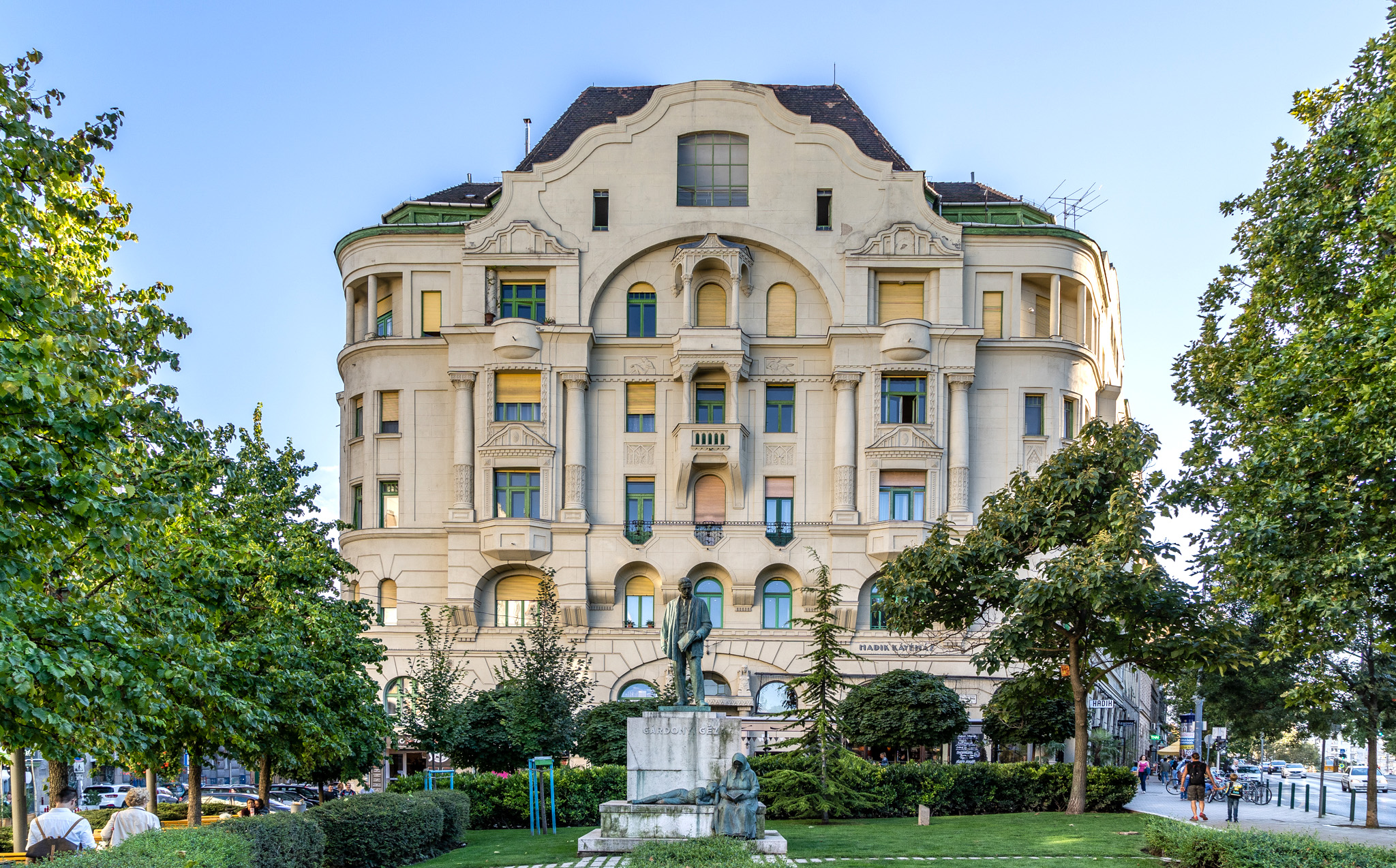
The statue of Géza Gárdonyi, behind it the house that houses a studio apartment used by Tivadar Csontváry Kosztka (Photo: Balázs Both/pestbuda.hu)
The building behind the statue (36 Bartók Béla Road) houses a studio once used by the painter Tivadar Csontváry Kosztka.
The legendary Hadik Café operates on the ground floor of the building. The café opened in 1910 (or 1906 according to some sources) and was a central scene on literary life between the two world wars. Figures such as Dezső Kosztolányi, Zsigmond Móricz, Árpád Tóth, Milán Füst, Lajos Nagy, and Tibor Déry were regular guests. However, the famous comical writer Frigyes Karinthy was the soul of the establishment. The original Hadik borrowed its name from the András Hadik Barracks on the other side of the road. After being closed in 1940, it was reopened 70 years later.
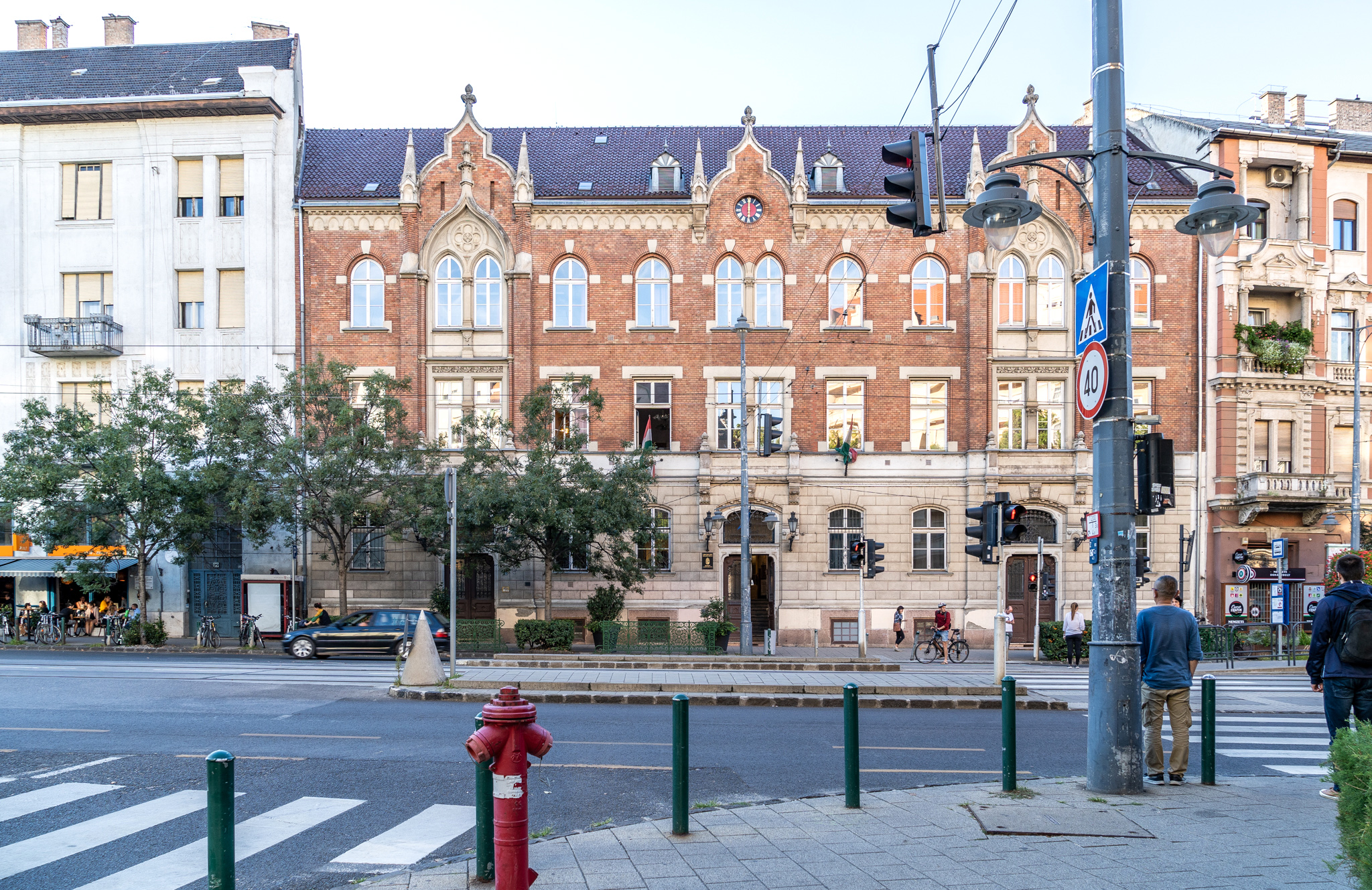
The clock on the facade of the Géza Gárdonyi Primary School chimes at the hour (Photo: Balázs Both/pestbuda.hu)
The Géza Gárdonyi Primary School overlooks the square. Founded 150 years ago, in 1870 by the city of Buda, the school is older than the unified Budapest itself. (The separate cities of Óbuda, Buda and Pest were unified in 1873.) Well-known figures such as Jenő Wigner and István Nemeskürty were students of the institution. The current building of the schools is, however, younger.
The largest square along Bartók Béla Road is actually Móricz Zsigmond Circus. Móricz, a respected writer, lived in the house under 56 Bartók Béla Road, overlooking the circus.
The most characteristic building of the circus (alongside the statue of Saint Emeric recently discussed on PestBuda) is, of course, the Gomba ('mushroom'), which was originally built in 1942 following plans by József Schall. The building originally housed a transformer for the trams and suburban railway lines and a ticket office. The beautifully designed building fell into disrepair by the early 21st century, and its demolition was also floated, however, the building was renovated during the reconstruction of the square.
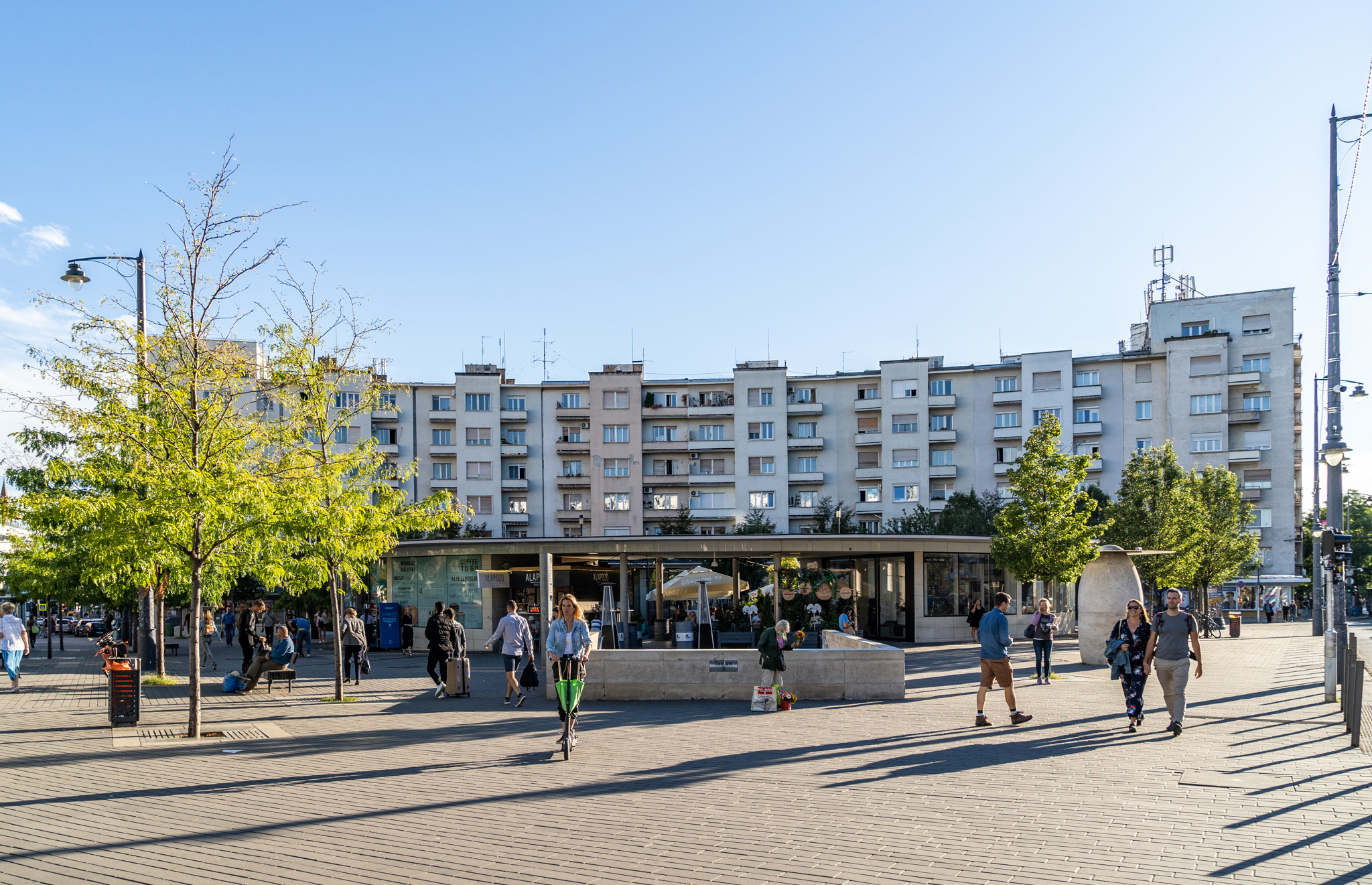
The Gomba, behind it the façade of the Gregersen House dominates Móricz Zsigmon Circus (Photo: Balázs Both/pestbuda.hu)
The circus is bordered in a semi-circle by the Gregersen House. The six-story curved building was designed by Hugó Gregersen. While seemingly one building, the block is compromised of several buildings. Their façades facing the square are unified as per the original plans. The Simplon Cinema operated on the ground floor of the block facing Bartók Béla Road from 1934. After the war, it was known as Bartók Cinema and when opened, was one of the largest and most modern cinemas in Budapest.
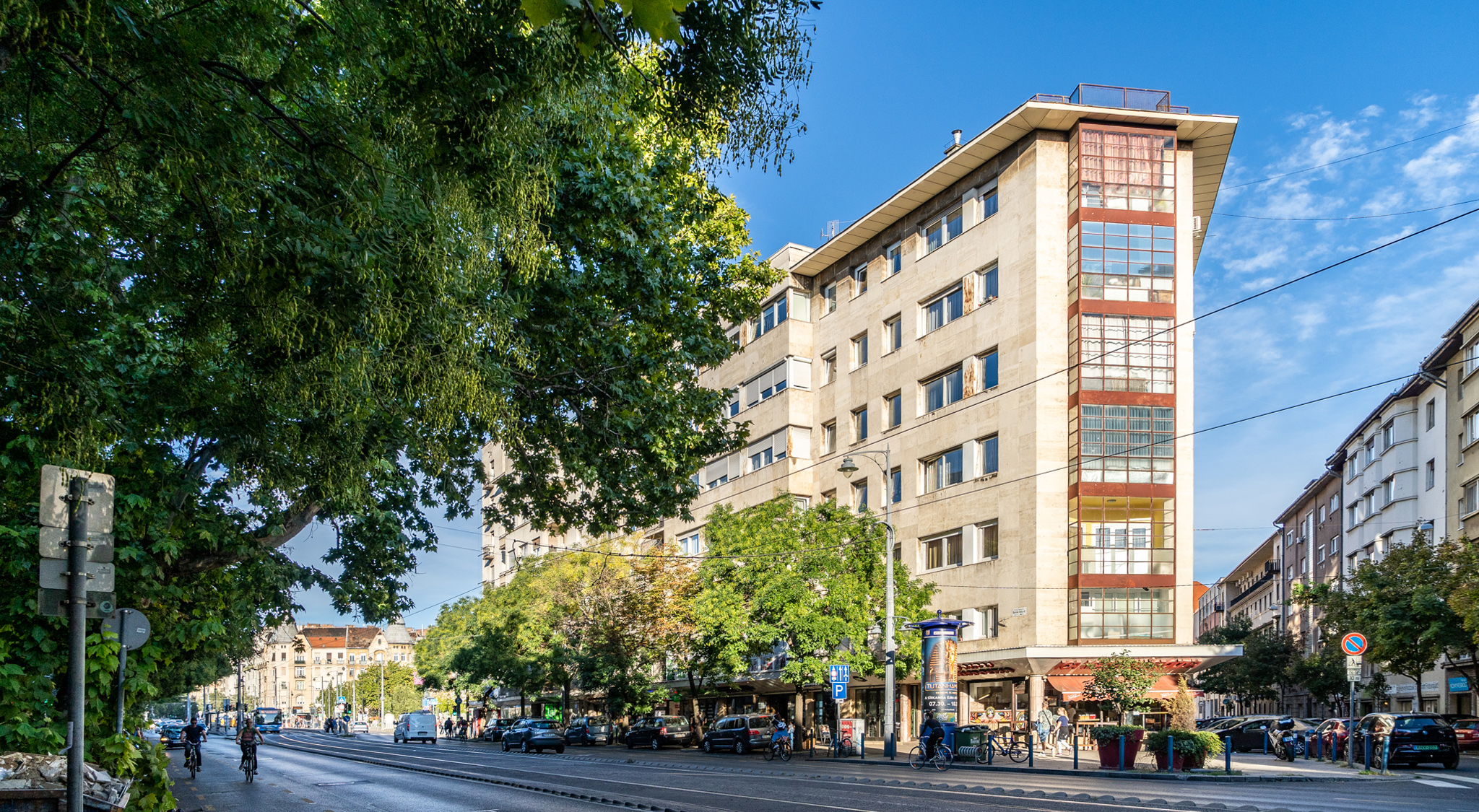
In 1934 not only the cinema but the building it was in was considered very modern (Photo: Balázs Both/pestbuda.hu)
Fehérvári Road begins at the circus with the building of what used to be the Váli Street Primary School (Váli Street 1). Since its completion in 1912, the building has housed several schools: the Saint Emeric Secondary School, the Richárd Kolos Vocational School and since 2000 the Attila József Secondary School.
Besides the school stands the Saint Christopher Clinic (12 Fehérvári Road). Built in 1948–1949 the building is one of the most prominent public works projects completed in the short period between the end of World War II and the communist dictatorship.
Karinthy Frigyes Street is a charming boulevard influenced in character by the proximity of the Technical University. Opposite to it Villány út houses iconic buildings such as the Saint Margaret Secondary School, the Saint Emeric church and the Saint Emeric Secondary School.
Cover photo: Bartók Béla Road, to the right: Géza Gárdonyi Primary School (Photo: Balázs Both/pestbuda.hu

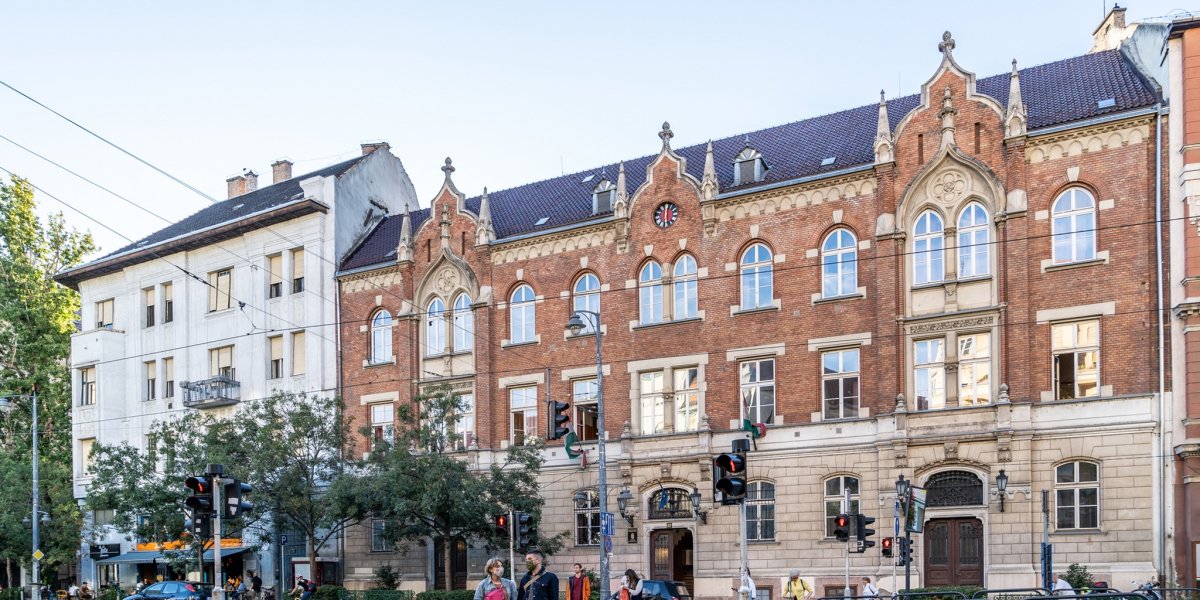



































Hozzászólások
Log in or register to comment!
Login Registration